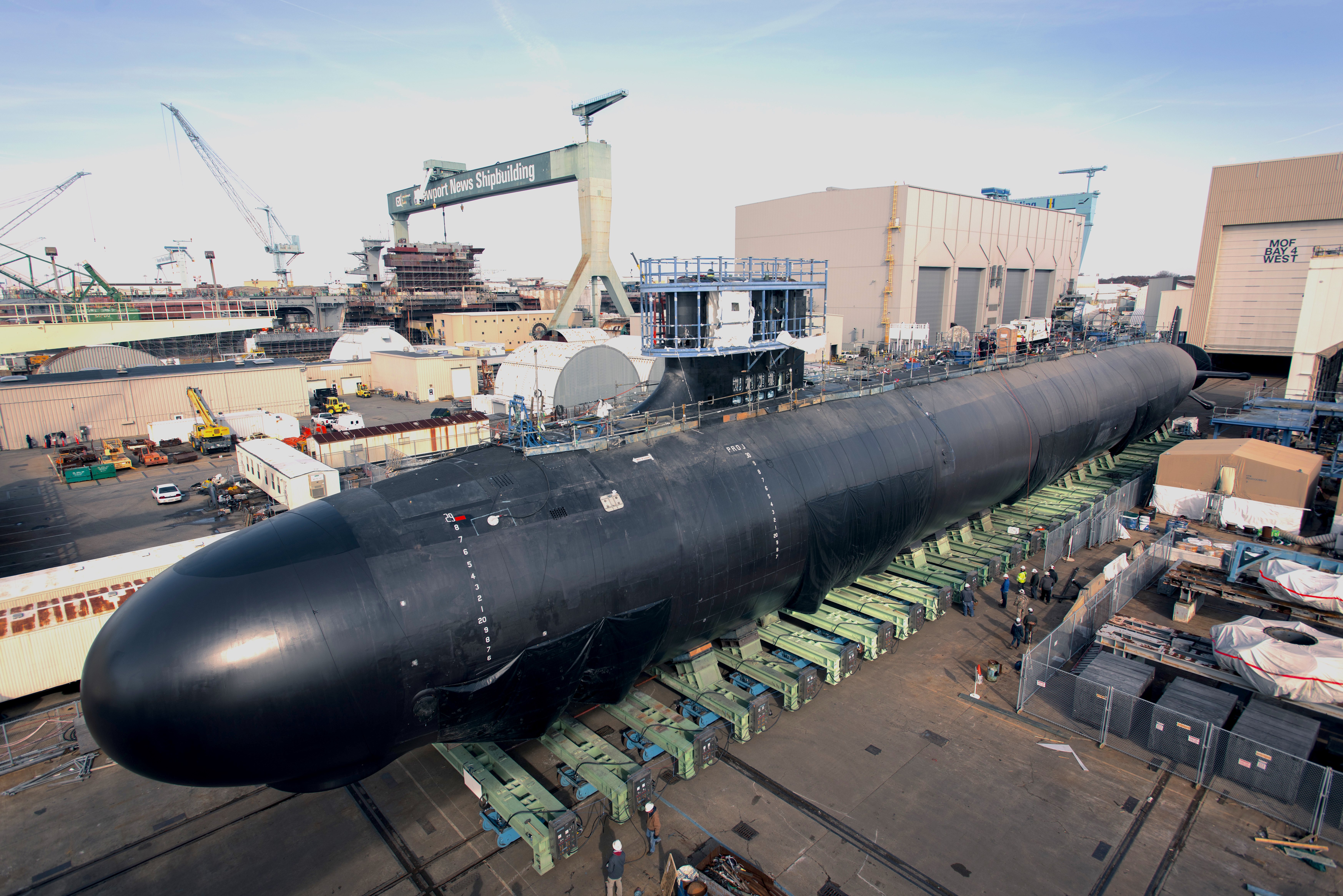
This post has been updated to include more information about the conference report and NDAA timeline.
Congressional authorizers have worked out a deal that would approve funding for two Virginia-class submarines, both the House and Senate Armed Services Committees announced Thursday.
The Fiscal Year 2021 defense policy conference report authorizes money for two Virginia-class boats and advanced procurement money so the Navy can continue constructing two submarines each year, according to a summary of the report released by the House Armed Services Committee.
The move comes after the Navy only sought one Virginia-class submarine in its FY 2021 budget request, but listed a second boat on its annual unfunded wish list.
Some lawmakers, including House Armed Services seapower and projection forces subcommittee chairman Rep. Joe Courtney (D-Conn.), criticized the budget submission for only seeking to buy one fast-attack submarine.
Courtney, who has long been an advocate for building more submarines, praised the conference report for adding the second boat.
“I’m proud of the bipartisan support to reverse the Administration’s inadequate shipbuilding budget and authorize funding for a second Virginia-class submarine,” Courtney said in a statement.
“This is a big win for our national security and for eastern Connecticut. Preserving the two-a-year build rate provides a steady demand signal to our shipbuilding industrial base, mitigates the Navy’s submarine force structure decline, and helps stabilize the Columbia-class submarine program—the Defense Department’s top acquisition priority,” he added. “The proposal to cut this submarine was so flawed that the Trump Administration eventually asked Congress to reverse it.”
Senate appropriators in their funding bill unveiled last month allotted money for only one Virginia-class boat, while the House Appropriations defense subcommittee in its version of the funding bill included money for two Virginia submarines.
In addition to the two Virginia-class boats, the authorization conference report also approves funds for two Arleigh Burke-class destroyers, one Columbia-class ballistic missile submarine, one Expeditionary Fast Transport (EPF) vessel, one Constellation-class frigate and two T-ATS towing and salvage ships.
The Navy in its FY 2021 submission did not ask to purchase an EPF ship, but did seek to buy one San Antonio-class Flight II amphibious transport dock (LPD-17). While authorizers did not approve funds for the amphibious ship, both House and Senate appropriators in their respective spending bills allotted funds for an LPD.
In their individual drafts of the bill earlier this year, both House and Senate authorizers sought to implement oversight measures for the Large Unmanned Surface Vehicle (LUSV) program. The Navy has received mixed reviews on its USV acquisition approach from lawmakers, who worry the service needs to conduct more testing and experimentation before buying more unmanned ships.
One way Congress is working to ensure the Navy experiments with the unmanned technology is by authorizing money for the service to “convert an EPF to an unmanned surface vessel to help better develop Concept of Operations (CONOPS) for future unmanned surface vessels,” according to the HASC summary of the conference report.
The conference report also features provisions related to the delay of the Navy’s 30-year shipbuilding plan and Integrated Naval Force Structure (INFSA). If passed, the NDAA would prevent the Navy from retiring ships before the service gives Congress the INFSA, according to the summary. The Navy in its budget request said it wanted to retire the four oldest Littoral Combat Ships.
The report would limit some funding for the Defense Secretary pending the 30-year shipbuilding plan’s submission to lawmakers. HASC included a similar provision in their draft of the policy bill earlier this year, a move that came after former Defense Secretary Mark Esper put a hold on the Navy’s INFSA and shipbuilding plan.
After taking slightly different approaches to Indo-Pacific security in drafting their bills, the committees in the conference report came to an agreement to approve a Pacific Deterrence Initiative. The NDAA would approve $2.2 for the effort, meant “to reassure allies and partners of an enduring U.S. commitment to the region and to enhance congressional oversight of military activities in the [area of responsibility],” according to the report summary.
While President Trump this week threatened to veto the bill because it does not feature the repeal of a technology provision known as section 230, a senior Republican SASC aide said Thursday the committees are not yet planning on how to handle a veto.
A senior Democrat HASC aide said the House filed the legislation Thursday and is slated to take up the conference bill in the lower chamber early next week. The bill will then head to the Senate.





